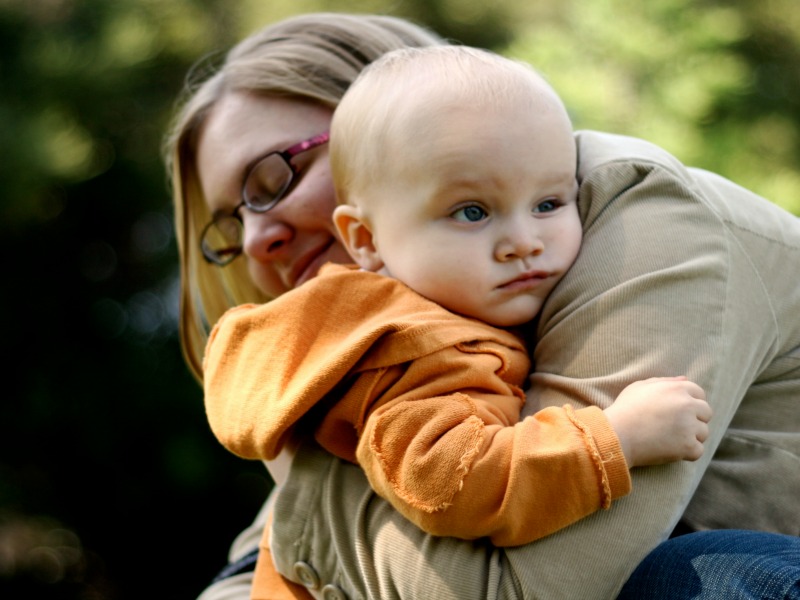Hill+Knowlton Strategies 23 Mar 2015 // 1:15PM GMT

A consistent theme at last week’s Mumstock - an all-day marketing to mums conference organised by the lovely folks at Mumsnet - was the importance of deeply understanding the multiple emotional roles women play in their interactions as "mum". (My colleague Avra Lorrimer has penned a brilliant summary of the key take-outs here. Essentially, we marketers are wrongly presenting motherhood as a job and failing to acknowledge the multiple and interconnected emotional roles that women want to play in the lives of their children.)
Maybe it’s because work currently provides a welcome respite from the premature onset of the Terrible Twos with my daughter Mabel, but what really popped for me on this broad topic of the importance of "mum insights" was some advice from Paul Lindley, founder of baby food brand Ella's Kitchen. He urged us to "think like a toddler" when trying to understand this target audience.
Of course, this resonated with a delicious slug of irony - as a mum of two whose job is to help brands connect with women with kids, I've programmed myself to not give my two little people a second thought once I leave the house. During office hours, my job is my *whispers* “favourite child” and the benefits of drinking tea while it’s still hot and a loo break without an audience are welcome bonuses.
But how refreshing to immerse yourself into the mind-set of a mini-person, not just as a way of connecting with parents, but more broadly as a means of approaching the day job and the craft of coming up with ideas? As Lindley explained, toddlers never give up, they're honest and they're totally unaware of consequences. And they're the most creative human beings. Who wouldn’t want license to be more carefree and playful when noodling a brief? Even better, let clients and colleagues know you’re experimenting with this new way of thinking and working and it’s a pretty handy excuse for getting away with some refreshingly disruptive (if not borderline abhorrent) behaviour that could really liven things up.
So Lindley got me thinking, how could we all Be More Mabel and make that next creative brief child’s play?
1. Identify your stuffed rabbit and be obsessive about it
Babies thrive on predictable routines and rituals to the point of borderline OCD. So what’s your equivalent of Mabel’s stinky stuffed “Wabbit” and the full 16 verses of Wheels on the Bus that smooth the transition towards a peaceful night’s sleep – in other words, the routines and processes that get you to a successful creative outcome? At H+K we’ve got a simple but effective 7 stage creative process that guides the way we cast the right expertise and resources, provides a framework for the way we present ideas, ensures our work is insight-driven and sets the conditions for creativity to flourish. When we stick the formula, we win business. Simple. And can I suggest that like a toddler, you might want to go further and have a TOTAL MELTDOWN if anyone deviates from the process.
2. Get yourself a plastic tea set
Toddlers use imaginative play to make sense of their world. It’s like trying on a coat called “growing up” and seeing if it fits. So just as Mabel’s plastic tea set transforms bath time into a dry run for phenomenal hostessing skills in later life, think about how by simply “living” like your audience for a while, you can come at your creative challenge from a different angle. It’s “Insight 101” but I’ve come across plenty of people in my time on nappy and nutrition brands that have never fed a baby or dealt with a Code Brown first hand.
3. Throw food everywhere then wait for a reaction
Toddlers don’t care about compliance. They’re anarchic little b*stards and their moments of rebellion are well timed for maximum impact – usually when you’re late, busy, tired or desperate for Wine O’ Clock to commence. Hiding behind the sofa at bedtime, blowing raspberries with a mouthful of yoghurt – these little tests are all designed to judge tolerance levels and establish the boundaries of acceptable behaviour. So with your next brief, especially with a long-term client, think about the creative equivalent of spraying the decision-maker’s face with Yoplait. Don’t dish up what they would necessarily expect – ask yourself what kind of response would make them angry, uncomfortable, frustrated or reduced to tears of despair. Those ideas will give you something much juicier to riff off in the creative process and then get you to a place that’s more comfortably buyable.
4. “Mo’ yot?”* (*Translation: “Mother dearest, please may I have a second pot of that raspberry-flavoured deliciousness they call fromage frais?”)
Continuing the dairy-themed wisdom, it’s fascinating to observe a toddler’s language acquisition. And it’s amazing how effectively they can communicate with such a sparse vocabulary and limited verbal skills. A potent reminder to Keep. It. Simple.
5. Play and play and play until you're so tired you could cry.
There’s one thing that toddlers have got ABSOLUTELY right: fun is a full time profession that they’re doggedly committed to and brilliant at. They never let themselves get bored because their threshold is low. So in the same way that Mabel ricochets between her puzzles, dollies, bricks, Play-Doh, cars and dinosaurs, don’t let yourself get so deep in a creative challenge that you become jaded and irritable. Walk away. Play with something else. Find some different playmates. At the end of the day, let’s remind ourselves that as creatives, aren’t we incredibly lucky to be paid for the grown-up equivalent of making up stories and building amazing things. Even better if we can remember to have fun while we do it.
Of course, it’s not lost on me that the reason us parents indulge the whimsy of our toddler offspring is biology, a sense of duty and blind, unwavering and crazy unconditional love. And Merlot. So perhaps proceed with caution while I craft a second chapter in this series entitled “How to make clients love you like your mama”…
By Claire Candler, Head of Consumer Packaged Goods at Hill+Knowlton


































.jpg)


.png)
.jpg)











